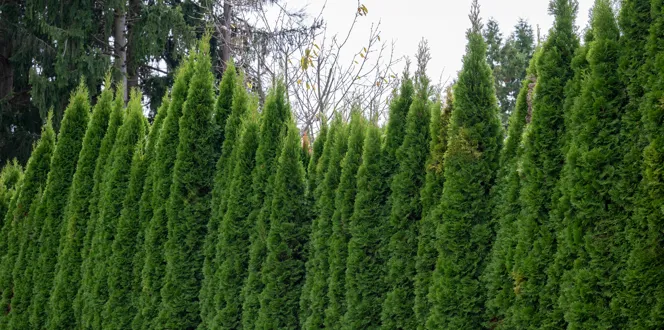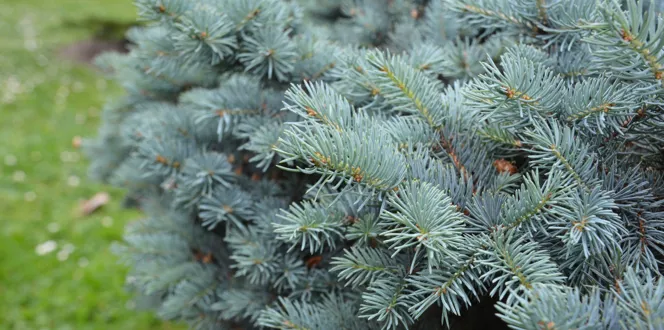Trees have so many different characteristics that make them interesting assets to your home landscape.
They may have an interesting leaf shape or color that you admire or flowers with amazing aromas and a unique overall canopy in your yard.
Peeling bark is also something you might notice with some of your trees.
In fact, trees that shed bark bring unique color patterns and textures. The decorative, peeling bark adds a new element that gives that tree additional character throughout the year.
And while peeling bark can be a sign of physical damage, such as from insects, frost, or lightning, other trees shed bark naturally.
Let’s look at the reasons trees might shed their bark and explore some of the trees that shed bark in the summer.
What Does Bark Shedding Mean?
When it comes to trees that shed bark, you might find this peeling happening on their trunks, as well as on smaller branches.
You’ll also find that each tree species may exhibit shedding bark differently. Some trees shed in large chunks, while others have bark that peels in paper-thin sheets.
Why does this happen? Tree bark thickens as the tree grows. The inner layers are soft, while the outer layers are composed of thicker tissue. As the tree grows, it pushes the trunk outward, cracking the bark. This results in the outer bark being sloughed off to expose the inner layers.
In fact, most trees shed bark, but in some species it’s more noticeable than others.
Why Do Trees Shed Bark In The Summer?
For some species, it is a perfectly normal occurrence in the summer months. It’s a part of that tree’s natural aging process.
If you notice more bark shedding than normal, it could be a result of more hot or windy days. It could also just be a specific species that tends to shed more heavily, including American sycamore, silver maple, redbud, London planetree, bald cypress, some eucalyptus species, crape myrtle, and some birch species.
In some cases, bark loss can also indicate a problem. Diseases or environmental stressors, for instance, can cause bark splitting, as well as cankers or open wounds. A certified arborist can properly assess your tree and give it the care it needs to diagnose, treat, and prevent these issues.
What Trees Shed Bark?
There are a variety of tree species that list peeling bark as a natural attribute. Here are a few to note.
Paperbark maple – This tree has papery sheets of bark that reveal cinnamon-colored new bark underneath. The soft, green leaves of this tree turn scarlet in fall. Paperbark maple can reach 25-feet tall with a 15- to 20-feet spread. Plant it in full to partial sun in USDA hardiness zones 4 to 8.
Crape myrtle – Crape myrtle is loved because it’s a tree that sheds bark, which gives its trunk beautiful colors and differentiation. Its colorful, long-lasting blooms bring color all summer, and then its fall color enhances landscapes with reds, oranges, and yellows. Plant it in full sun in USDA hardiness zones 6 to 9.
Paper birch – The peeling bark of the paper birch contrasts sharply against its bright green leaves. This tree can reach 50- to 70-feet tall with a 25- to 50-foot spread in USDA hardiness zones 2 through 7. It likes moist, cool soil and is not very drought resistant. If bronze birch borer is a problem in your region, river birch is a nice alternative with bark that peels dramatically in reddish-brown layers that reveal white inner bark.
Sycamore – The sycamore’s eye-catching bark is patterned and multi-colored. It flakes off in large portions, giving the trunk surface a greenish-white and brown appearance. Also called the American plane tree, this tree generally grows to 100 feet tall and grows in USDA hardiness zones 4 to 9.
Eucalyptus – Some eucalyptus trees shed bark. As the bark of the eucalyptus dries and peels, it forms colorful patterns and patches on the trunk. These trees can reach 30 to 180 feet in height, depending on the variety. They can grow in USDA hardiness zones 8 to 11.
When To Call An Arborist
Typically, it’s normal for your tree to shed bark, especially if it’s a tree known for this trait.
In fact, as long as there is healthy bark beneath the peeling layers, your tree is OK.
But you might want to call your local certified arborist if you notice some of these additional signs that could mean trouble:
- Bark peels off after frost on the south or southwest side of the tree. This could be due to frost damage.
- Bark peels off after excessive heat.
- Bark sheds from an unhealthy tree. This usually accompanies other signs of trouble, such as cankers and dead leaves and twigs. This can signal that your tree may be suffering from pests or diseases.
If you see any of these issues, call your certified arborist to come take a look and let you know if your tree needs additional help.







